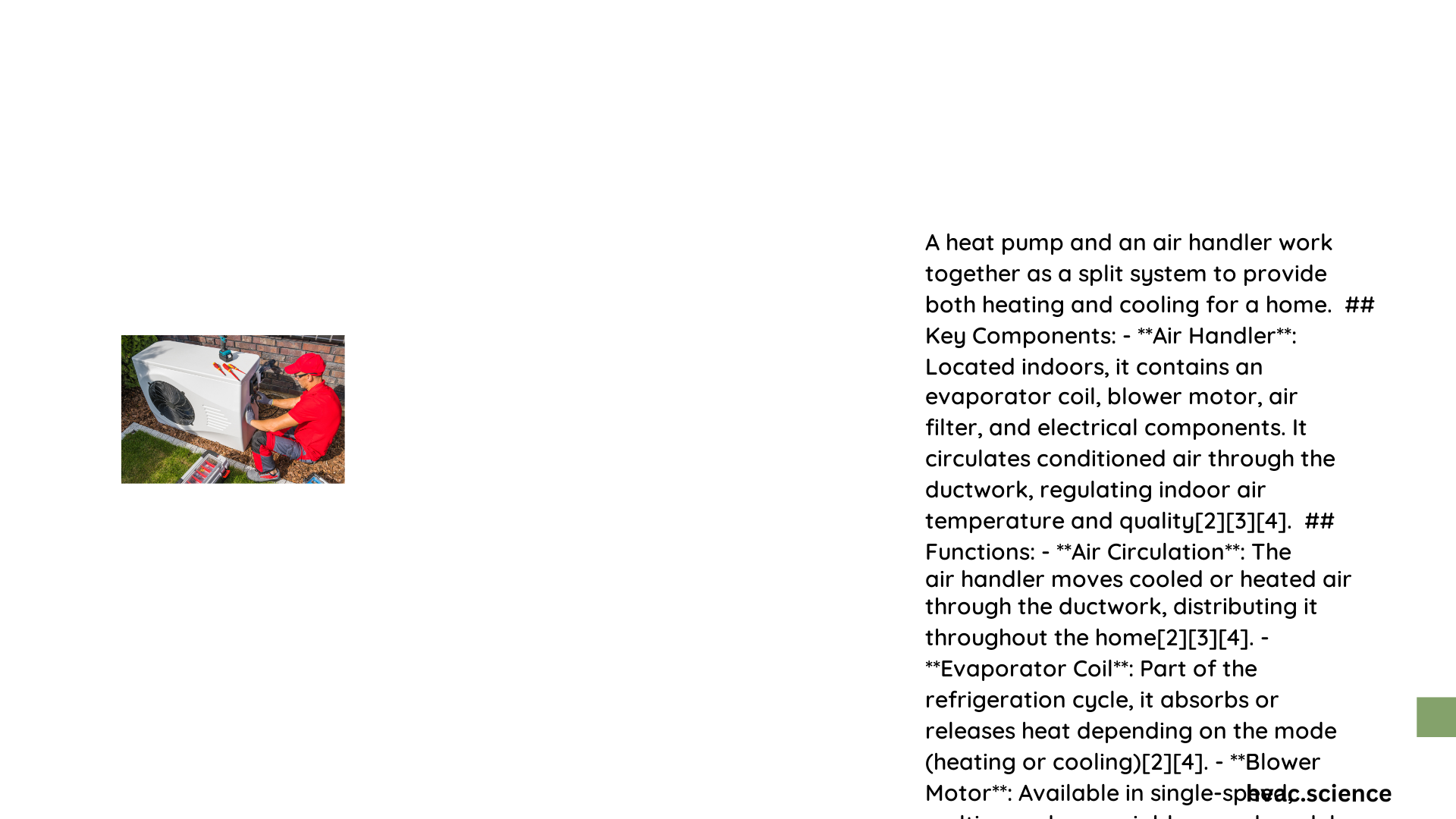A heat pump air handler is a critical component in modern heating and cooling systems, responsible for circulating conditioned air throughout residential and commercial spaces. These sophisticated units work seamlessly with heat pumps to provide efficient temperature control, utilizing advanced motor technologies and design features that optimize airflow, energy consumption, and overall system performance.
What Makes a Heat Pump Air Handler Essential?
Heat pump air handlers are the unsung heroes of indoor climate control, serving multiple crucial functions:
How Do Heat Pump Air Handlers Work?
- Air Circulation
- Moves conditioned air through ductwork
- Maintains consistent temperature distribution
-
Supports both heating and cooling modes
-
Temperature Regulation
- Integrates with heat pump systems
- Enables precise temperature control
- Adapts to different environmental conditions
What Are the Key Technical Specifications?
Comparative Air Handler Specifications
| Brand | Cooling Capacity (BTU/h) | Motor Type | Weight Range |
|---|---|---|---|
| B6BMM0 Series | 18,000 – 48,000 | Multi-speed (3-5) | 98-145.5 lbs |
| Bosch BVA 2.0 | 24,000 – 54,500 | ECM Blower | 119-170 lbs |
| Goodman AMST | Up to 15.2 SEER2 | 9-Speed ECM | Varies |
What Factors Influence Air Handler Performance?

Installation Considerations
Cost Factors:
– Ducted system installation: $2,500 – $7,000
– Ductless system installation: $1,500 – $5,000
– Labor complexity
– Regional pricing variations
How to Maintain Optimal Efficiency?
Maintenance Checklist
- Monthly Tasks
- Inspect air filters
- Clean filter surfaces
-
Check for debris accumulation
-
Quarterly Responsibilities
- Examine condensate drain
- Verify system connections
-
Test thermostat functionality
-
Annual Professional Inspection
- Comprehensive system evaluation
- Refrigerant level check
- Performance diagnostics
What Energy Efficiency Metrics Matter?
Understanding Performance Ratings
- SEER (Seasonal Energy Efficiency Ratio)
- Indicates cooling efficiency
- Higher ratings mean lower energy consumption
-
Most modern units: Up to 15.2 SEER2
-
HSPF (Heating Seasonal Performance Factor)
- Measures heating efficiency
- Typical range: 7-10
- Directly impacts winter heating costs
What Challenges Do Homeowners Face?
Common Air Handler Issues
- Airflow Restrictions
- Blocked vents
- Dirty filters
-
Ductwork leakages
-
Performance Limitations
- Incorrect system sizing
- Poor installation
- Inadequate maintenance
Expert Recommendations
- Choose a system matching your specific square footage
- Prioritize professional installation
- Commit to regular maintenance
- Consider energy efficiency ratings
- Invest in quality components
Conclusion
Heat pump air handlers represent a sophisticated solution for modern home comfort, blending advanced technology with energy-efficient design. By understanding their functionality, maintenance requirements, and performance metrics, homeowners can make informed decisions that optimize indoor climate control.
